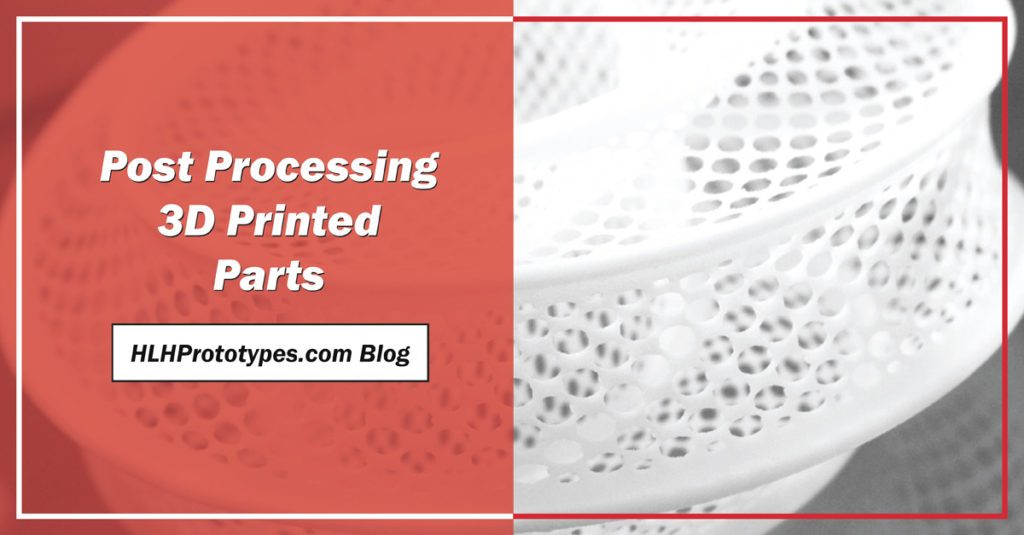Post processing of 3D printed parts

James Murphy
October 9, 2018
3D printing encompasses several different technologies and many different materials but for most manufacturing applications post processing options can be broken down simply into those for plastics or metals and either essential or enhancing.
Most if not all 3D printed parts, no matter the technology or material require some post processing to give you a finished part. Other non-essential post processing steps can be used to produce desired characteristics or improve surface finish. Currently estimates for some metal 3D printed parts are, post processing can be up to 70% of the final parts cost and a large proportion of the time too.
So what are the post processes for different materials and which are unavoidable and which can be used to augment?
Plastics and essential
SLA parts must be cured in an UV oven
Supports must be removed from SLA and FDM parts
SLS parts must be cleaned of excess powder which sometimes cakes to the sides
Metal and essential
Remove build plate and loose powder
Thermal stress relief
Removal of supports – for metal parts this can be challenging and time consuming. Depending on where they are the support removal can impact on the parts appearance and function.
Heat treatment
Parts from Desktop Metals binder-jetting process parts require sintering
Plastic and enhancing
Polishing due to the layer build process of 3D printing many parts have visible steps in some areas which may not be desired. Polishing can remove these and produce cleaner, smoother parts.
Sand or bead blasting quickly cleaning and deburring the parts surface.
Tumbling used to deburr, clean and polish the surface of 3D printed parts
Vapor polishing uses a solvent to dissolve the material and smooth out the steps
Painting – this is one of the most widely used and common post process finishes performed on plastic parts whether from 3D printing or other processes.
Powder coating parts made from materials able to withstand the high temperatures of the process. Powder coating makes dimensional control difficult and is generally used to achieve some functional or performance requirement.
Plating many 3D printed parts can be metal coated. This can be done for aesthetic reasons but is generally coupled with the desire for some enhanced physical characteristics too.
Dyeing SLS parts can be dyed using commercial clothing dyes
Metal and enhancing
Shot or bead blasting – improve the surface roughness of the parts
CNC machining improves surface finish and dimensional accuracy
Polishing improve surface roughness and appearance
Anodizing aluminium 3D printed parts can be anodized as machined aluminium can be
Painting and plating – as with plastic 3D printed parts, metal parts can be post process electroplated or painted
The essential and enhancing post process steps in 3D printing can be a large proportion or even make up the majority of the lead time to produce the parts. The more post processing required the more the parts will cost too. A SLA part with support removal and minimal finishing can be very inexpensive, the same part that needs to be polished transparent can be 5-6 times more expensive.
It is important to see 3D printing as not just a single process but a series of steps and processes that combine to manufacture parts. Reducing post processes can result in a faster and cheaper part, but used well the post processing of 3D printed parts can produce parts with much improved physical characteristics.
At HLH we offer a massive range of post processing options for 3D printed parts.
James Murphy
HLH, we make things for you. James@HLHPrototypes.com
